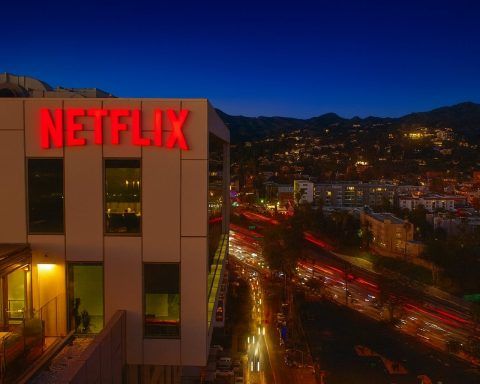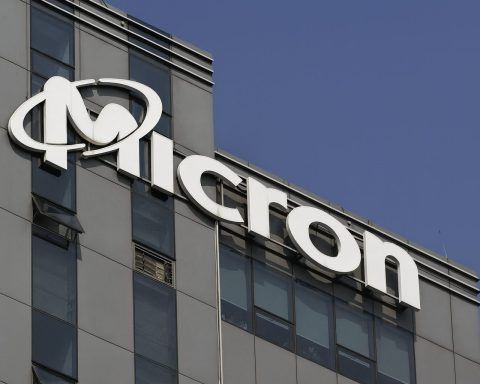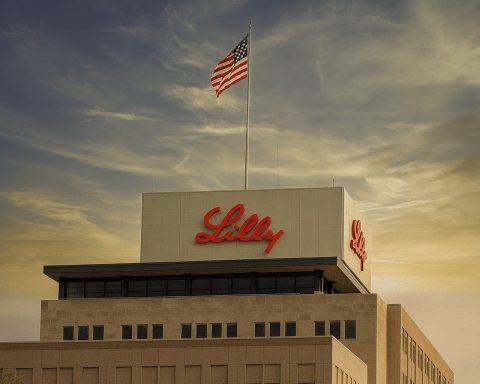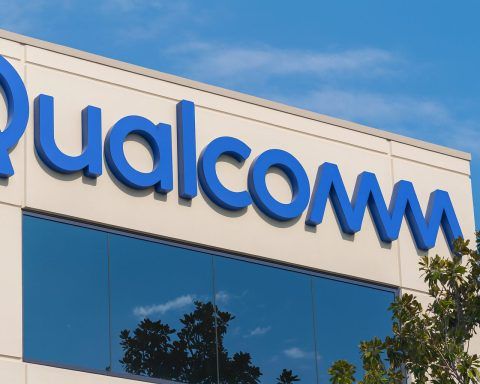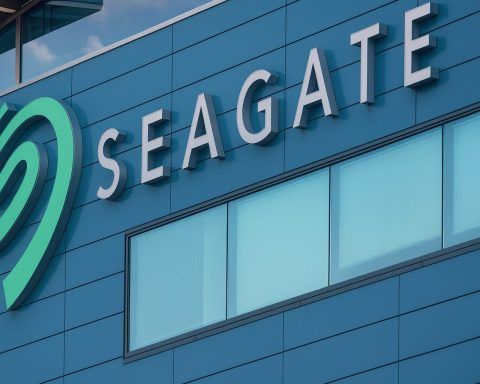- Apple’s iPhone 17 launch sparks global fanfare and record sales in India, with top models selling out [1] [2]. Early data show a 19% higher first-week demand than last year’s iPhones [3].
- Microsoft hikes U.S. Xbox console prices again, citing tariffs and costs, pushing the Xbox Series X to ~$650 [4]. Experts say trade pressures – not greed – forced the increase [5].
- “Break up Google,” urges Germany’s culture minister, slamming the tech giant’s tiny tax contributions. He notes EU fines near €10 billion and wants tougher antitrust action [6] [7].
- SpaceX hits its 117th Falcon 9 launch of 2025, mostly for Starlink satellites [8]. Over 2,000 Starlink minis launched this year as SpaceX shatters reuse and cadence records [9].
- SoftBank beams 5G from the sky in a successful HAPS (High-Altitude Platform Station) test. A plane at 3,000 m created six cells of coverage, proving aerial networks viable ahead of a 2026 launch [10] [11].
- Stellantis unveils a breakthrough EV battery prototype that’s lighter, faster-charging, and combines the inverter/charger into the battery [12] [13]. Charging times drop ~15%, a “major step” toward affordable EVs [14].
- Saudi fintech HALA lands $157 million in one of Mideast’s largest startup rounds [15]. The platform serves 142,000+ small businesses and will expand SME lending and payments in line with Saudi Vision 2030 [16] [17].
- Urgent Chrome update fixes a critical 0‑day (CVE-2025-10585) under active attack. Google patched the V8 engine bug – a type confusion flaw – exploited in the wild [18].
- SonicWall breach alert: Encrypted firewall config backups were accessed in the cloud, affecting under 5% of customers. SonicWall urged immediate password resets and config updates [19].
- AP investigation exposes U.S. tech in China’s surveillance. A trove of leaked emails shows IBM and others knowingly helped build China’s oppressive policing tech, contradicting their denials [20] [21].
Apple’s iPhone 17 Frenzy and Record India Sales
Apple’s latest iPhone 17 series officially hit stores worldwide on September 19, drawing long queues from New York to Mumbai [22]. In India, crowds lined up outside Apple’s new flagship stores as the base iPhone 17, new “iPhone Air,” and high-end 17 Pro/Max models sold out instantly [23]. Pre-orders in India were about 10% higher than last year’s, and analysts say Apple is poised to surpass 5 million iPhones sold in Q3 2025, marking the 15th straight record quarter for iPhone sales in the country [24] [25]. “Apple, with its aspirational brand, is successfully riding the premiumization trend in India,” observed Tarun Pathak of Counterpoint Research, noting first-week demand for the iPhone 17 series ran 19% higher than the iPhone 16 last year [26]. He credits Apple’s strategy – including larger base storage (256 GB) and zero-interest financing – with drawing more upgraders [27]. Globally, the iPhone 17 lineup introduces new chips and designs, and despite a $100 price increase on the Pro models (now starting at $1,099 in the U.S.) [28] [29], Apple appears to have no shortage of eager buyers.
Xbox Price Hike in U.S. Amid Tariff Pressures
Gamers got unwelcome news as Microsoft announced a second Xbox price hike this year in the U.S., citing “macroeconomic” cost pressures [30]. Starting Oct 3, the Xbox Series S (1 TB) will cost around $450, and the flagship Series X about $650 – up significantly from launch prices [31]. A special edition 2 TB Series X will near $800 [32]. Combined with a spring increase, the Series X has jumped $150 in six months [33]. Microsoft blames U.S. import tariffs on Chinese-made electronics and rising supply chain costs for forcing the adjustments [34] [35]. “This price increase is less about opportunism… [it] is the result of tariff increases and rising costs in the supply chain,” explained Joost van Dreunen, a games industry professor at NYU [36]. The hikes come as console rival Sony also bumped PlayStation 5 prices by ~$50 in the U.S. last month (the PS5 Pro now $749) [37]. With a heavy fall lineup of games (e.g. the anticipated GTA VI), analysts warn higher console prices plus inflation could dampen gamers’ spending [38]. Microsoft says international Xbox prices and accessory costs aren’t changing [39], but U.S. gamers will be paying a premium for next-gen hardware going into the holiday season.
German Minister’s Bombshell: “Break Up Google”
Europe’s scrutiny of Big Tech escalated as Germany’s Culture Minister, Wolfram Weimer, publicly called for Google to be broken up over its dominance and tax avoidance [40] [41]. In a Politico podcast interview, Weimer blasted the Alphabet-owned giant for “paying next to no tax” in Germany and “giving nothing back to society,” arguing that antitrust regulators should consider a Google breakup as the “best” solution [42]. His remarks came just after the European Commission hit Google with a €2.95 billion fine for abusing its online ad market power – bringing Google’s total EU fines near €10 billion [43] [44]. The timing also risks trade tensions: Weimer’s comments “risk the ire” of U.S. President Donald Trump, who called Europe’s digital taxes unfair to U.S. firms [45] [46]. (Trump even threatened tariffs on countries targeting American tech [47].) Still, Weimer insists Europe is on a “good path” regulating Big Tech but must do “substantially more”, suggesting a 10% revenue tax on large digital platforms is in the works [48]. He noted Google’s practice of routing profits through low-tax Ireland – “They earn billions here and sneak it all out through Dublin,” he said [49]. The blunt breakup call from a prominent EU official underscores the growing appetite in Europe for tougher tech monopolies enforcement.
SpaceX’s Relentless Launch Record and Starlink Push
SpaceX notched another milestone, conducting its 117th Falcon 9 launch of 2025 this week – an unprecedented cadence for orbital missions [50]. “Today’s launch was the 117th Falcon 9 flight of the year already. More than 70% of those missions have been dedicated to building out the Starlink megaconstellation,” reported Space.com [51]. Indeed, on Sept 18–19 SpaceX performed back-to-back Falcon 9 flights from Florida and California, adding 28 Starlink internet satellites from Cape Canaveral on Thursday and 24 Starlink “V2 Mini” satellites from Vandenberg on Friday [52]. The Friday liftoff at 9:31 AM PT marked SpaceX’s 84th Starlink-focused launch of 2025 [53]. So far this year Elon Musk’s firm has lofted over 2,000 second-generation Starlink satellites [54], bolstering its broadband network. Reusability records continue to fall: the California mission flew a Falcon 9 booster on its 10th flight, then nailed the 507th successful booster landing to date on a droneship [55]. SpaceX’s rapid launch tempo (over 10 launches per month) is reshaping expectations for space access and has competitors scrambling to keep up. Looking ahead, SpaceX plans to start deploying much larger Starlink V3 satellites in 2026 using its Starship rockets, which are still in development [56]. The company’s breakneck pace in 2025 – aimed at expanding global coverage and meeting surging demand for connectivity – underscores SpaceX’s lead in the new space race.
SoftBank’s Flying Cell Towers: 5G via HAPS Trial
In a glimpse of futuristic telecom, Japan’s SoftBank successfully tested delivering 5G broadband from the stratosphere. The trial, conducted over Tokyo’s remote Hachijō Island, used a low-flying aircraft as a stand-in High-Altitude Platform Station (HAPS) to beam cellular service from ~3 km up [57] [58]. Impressively, the test created six separate LTE/5G cells on the ground – covering a wide area – and achieved ~33 Mbps downlink speeds at 15 km from the aircraft [59]. “SoftBank confirmed that communication can be maintained even under conditions equivalent to the periphery of a HAPS coverage area,” the company reported, indicating strong signals even at cell edges [60]. The prototype system integrated a cylindrical multi-cell antenna payload on a crewed plane, but the production solution will use specialized unmanned airships or drones as the HAPS vehicles [61] [62]. SoftBank partnered with U.S. firm Sceye to develop lighter-than-air solar-powered airships and aims to launch a pre-commercial HAPS service in 2026 [63]. Such airborne platforms could provide mobile coverage over 200 km diameter areas, bridging connectivity gaps in rural or disaster-hit regions [64] [65]. While details on the 2026 pilot service are scarce, SoftBank’s recent test proves the core tech works. The achievement marks a major step toward augmenting terrestrial cell networks with stratospheric “cell-tower drones,” potentially revolutionizing telecom by bringing connectivity to places conventional towers or satellites can’t easily reach.
Stellantis Reveals Faster-Charging, “All-in-One” EV Battery
Automotive tech took a leap as Stellantis unveiled a prototype EV battery system with radically improved charging and efficiency. Debuting in Paris on Sept 19, the Intelligent Battery Integrated System (IBIS) eliminates separate onboard chargers and inverters by integrating those power electronics directly into the battery pack [66] [67]. The result is an EV battery that is 10% more efficient than today’s systems and can reduce charging time by about 15% (roughly an hour faster for a full charge) [68]. By folding inverter and AC/DC converter functions into the battery using advanced electronics (200 transistors controlling the output), Stellantis also cut vehicle weight by 40 kg and freed up space [69]. “This milestone marks a major step forward in the electrification of mobile and stationary energy applications,” Stellantis proclaimed [70]. Co-developed with Saft (a TotalEnergies subsidiary), the IBIS battery is now undergoing road tests in a Peugeot e-3008 crossover [71]. The design promises not only faster charging but also lower cost and easier servicing, since one integrated unit replaces multiple separate components [72] [73]. Stellantis hinted this technology could reach production EVs by late this decade [74], potentially giving brands like Peugeot, Fiat, Jeep and Chrysler a significant edge. With EV adoption still hindered by high prices and charging hassles, innovations like integrated batteries could be game-changers – if they scale successfully. Notably, Porsche is reportedly working on a similar “modular multi-level inverter” concept to streamline EV power systems [75], indicating industry-wide interest in this approach to make electric cars more affordable and convenient.
Saudi Fintech Startup Hala Scores Landmark $157 M Round
In startup news, Riyadh-based fintech platform Hala raised $157 million in Series B funding, marking one of the largest fintech rounds ever in the Middle East [76] [77]. The round – co-led by TPG’s Rise Fund and Saudi Arabia’s Public Investment Fund via Sanabil – values Hala at around $900 million (just shy of unicorn status) [78] [79]. Hala provides embedded financial services for micro, small and mid-sized businesses, offering everything from digital business accounts and payments to loans and POS systems [80]. With over 142,000 SME customers and $8 billion in annual transaction volume on its platform [81], Hala plans to use the new capital to expand its product suite and lending programs in Saudi Arabia and the wider Gulf region [82]. The expansion aligns with Saudi Vision 2030 goals of boosting small business growth and financial inclusion [83] [84]. “The deal ranks among the largest of its kind in the Middle East,” noted FinTech Weekly, reflecting global investors’ growing confidence in the region’s tech sector [85]. Indeed, a slew of international and regional VCs joined the round, indicating strong appetite to back MENA startups. Hala’s CEO highlighted that beyond capital, the new investors bring valuable expertise to help Hala scale. The raise underscores a broader trend: the Middle East’s fintech scene is booming (another Saudi fintech, Tamara, just secured a $2.4 billion credit line [86]). With Hala now armed with one of the region’s biggest war chests, all eyes are on its next moves – from rolling out SME lending products to potentially becoming the region’s next unicorn.
Critical Chrome Zero‑Day Patch and Cybersecurity Alerts
Cyber defenders are urging users to update browsers and devices after a series of security scares. Google released an emergency Chrome update on Sept 18 to patch a high-severity zero-day vulnerability (CVE-2025-10585) that was already being exploited by attackers [87]. The flaw, a “type confusion” bug in Chrome’s V8 JavaScript engine, could enable arbitrary code execution if a user visited a malicious page [88]. Google’s threat team noted active exploits in the wild, making this Chrome’s sixth zero-day fix of 2025 [89]. Users on Windows, Mac and Android are advised to update Chrome immediately to stay protected. Meanwhile, network security vendor SonicWall disclosed a breach in which threat actors accessed encrypted configuration backup files for some of its firewalls stored in the cloud [90]. The encrypted files may contain device settings and metadata that, in the wrong hands, could help attackers target those network appliances. SonicWall said less than 5% of its customers were affected and that there’s no evidence of decrypted data misuse so far [91]. Still, the company is urging all customers to reset firewall passwords and upload fresh backups, as a precaution [92]. These incidents follow a string of cyberattacks in recent weeks – from state-backed hacks to ransomware – prompting heightened vigilance. In Hong Kong, officials at the Cybersecurity Summit stressed the need to safeguard upcoming “mega events” like the 2025 National Games from digital threats [93]. The takeaway for users and companies alike: keep software up to date and stay alert, as attackers are quick to seize on any weakness.
AP Investigation: U.S. Tech Giants Aided China’s Surveillance State
A startling Associated Press investigation revealed that American tech companies played a deeper role in China’s high-tech surveillance regime than previously known. The AP report, published Sept 19, documents how Chinese police agencies and defense contractors partnered with U.S. firms – notably IBM – to design and build the monitoring systems used to track Uyghur Muslims and other citizens [94] [95]. Internal emails and sales documents obtained by AP show that some Silicon Valley companies not only knew their technology might be used for repression, but even pitched it for that purpose [96] [97]. These findings flatly contradict years of denials by the tech firms, which claimed they weren’t responsible for end-uses of their products [98]. The AP team combed through tens of thousands of leaked documents (including a database from a Chinese surveillance firm) and even obtained classified Chinese government papers [99] [100]. One major revelation: IBM engineers in the mid-2000s helped advise on China’s nationwide surveillance architecture, effectively providing blueprints for an Orwellian system. U.S.-made components – from database software to facial recognition algorithms – became building blocks of China’s “digital police state.” The expose is already prompting calls in Washington for tighter export controls on sensitive tech. It also raises tough ethical questions: How did Western companies overlook – or overlook on purpose – the human rights implications? As AP notes, this is “a detailed and nuanced” case showing globalization’s dark side [101] [102]. With geopolitical tensions rising, the report could spur fresh scrutiny of tech firms’ overseas dealings and renew debates on balancing profit vs. principles in the tech industry.
Sources: Major tech news publications and wire services (Reuters, AP, Bloomberg, etc.), official company statements, and expert commentary [103] [104] [105] [106] [107] [108] [109] [110] [111] [112]. This roundup excludes AI-related developments to spotlight other tech domains as they unfolded on September 19–20, 2025.
References
1. www.livemint.com, 2. www.livemint.com, 3. www.livemint.com, 4. www.reuters.com, 5. www.reuters.com, 6. brandequity.economictimes.indiatimes.com, 7. brandequity.economictimes.indiatimes.com, 8. www.space.com, 9. spaceflightnow.com, 10. www.telecoms.com, 11. www.telecoms.com, 12. www.reuters.com, 13. www.reuters.com, 14. www.reuters.com, 15. www.bloomberg.com, 16. www.fintechweekly.com, 17. www.fintechweekly.com, 18. www.cybersecurity-help.cz, 19. www.cybersecurity-help.cz, 20. www.ap.org, 21. www.ap.org, 22. www.apple.com, 23. www.livemint.com, 24. www.livemint.com, 25. www.livemint.com, 26. www.livemint.com, 27. www.livemint.com, 28. www.facebook.com, 29. www.facebook.com, 30. www.reuters.com, 31. www.reuters.com, 32. www.reuters.com, 33. www.reuters.com, 34. www.reuters.com, 35. www.reuters.com, 36. www.reuters.com, 37. www.reuters.com, 38. www.reuters.com, 39. www.reuters.com, 40. brandequity.economictimes.indiatimes.com, 41. brandequity.economictimes.indiatimes.com, 42. brandequity.economictimes.indiatimes.com, 43. brandequity.economictimes.indiatimes.com, 44. brandequity.economictimes.indiatimes.com, 45. brandequity.economictimes.indiatimes.com, 46. brandequity.economictimes.indiatimes.com, 47. brandequity.economictimes.indiatimes.com, 48. brandequity.economictimes.indiatimes.com, 49. brandequity.economictimes.indiatimes.com, 50. www.space.com, 51. www.space.com, 52. spaceflightnow.com, 53. spaceflightnow.com, 54. spaceflightnow.com, 55. spaceflightnow.com, 56. spaceflightnow.com, 57. www.telecoms.com, 58. www.telecoms.com, 59. www.telecoms.com, 60. www.telecoms.com, 61. www.telecoms.com, 62. www.telecoms.com, 63. www.telecoms.com, 64. www.telecoms.com, 65. www.telecoms.com, 66. www.reuters.com, 67. www.reuters.com, 68. www.reuters.com, 69. www.reuters.com, 70. www.reuters.com, 71. www.reuters.com, 72. www.reuters.com, 73. www.reuters.com, 74. www.reuters.com, 75. www.reuters.com, 76. www.bloomberg.com, 77. www.fintechweekly.com, 78. www.bloomberg.com, 79. www.bloomberg.com, 80. www.fintechweekly.com, 81. www.fintechweekly.com, 82. www.fintechweekly.com, 83. www.fintechweekly.com, 84. www.fintechweekly.com, 85. www.fintechweekly.com, 86. www.fintechweekly.com, 87. www.cybersecurity-help.cz, 88. www.cybersecurity-help.cz, 89. securityaffairs.com, 90. www.cybersecurity-help.cz, 91. www.cybersecurity-help.cz, 92. www.cybersecurity-help.cz, 93. www.chinadailyhk.com, 94. www.ap.org, 95. www.ap.org, 96. www.ap.org, 97. www.ap.org, 98. www.ap.org, 99. www.ap.org, 100. www.ap.org, 101. www.ap.org, 102. www.ap.org, 103. www.livemint.com, 104. www.reuters.com, 105. brandequity.economictimes.indiatimes.com, 106. www.space.com, 107. www.telecoms.com, 108. www.reuters.com, 109. www.bloomberg.com, 110. www.cybersecurity-help.cz, 111. www.cybersecurity-help.cz, 112. www.ap.org

